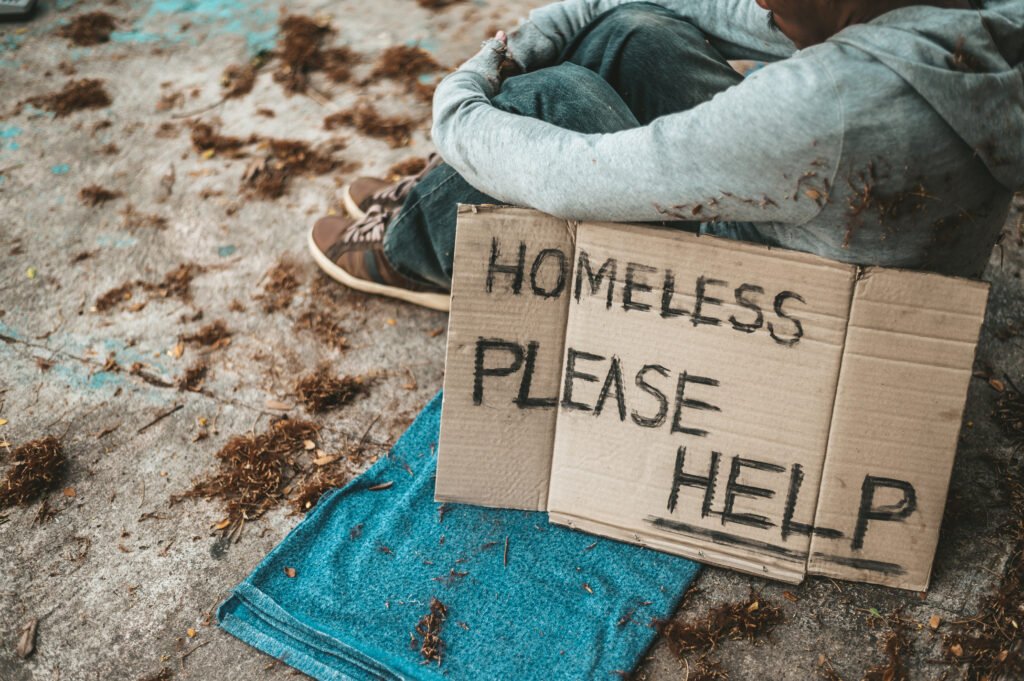
Did You Know?
Homelessness is a multifaceted issue affecting many communities, including Tulsa. Various factors contribute to the challenges faced by those experiencing homelessness. Understanding these factors can help in developing effective solutions. Here are some key areas of concern:
Affordable Housing Shortage
There is a significant lack of affordable housing options in Tulsa. Many individuals and families are unable to find housing within their budget, leading to increased rates of homelessness.
Mental Health and Substance Abuse
A significant portion of the homeless population in Tulsa struggles with mental health issues and substance abuse disorders. Access to comprehensive mental health services and addiction treatment is limited, exacerbating the problem.
Economic Factors
Economic instability, including unemployment or underemployment, low wages, and the rising cost of living, contribute to homelessness. Many individuals find it challenging to maintain housing without stable and sufficient income.
Veteran Homelessness
Tulsa, like many cities, has a notable population of homeless veterans. Despite some targeted programs, many veterans struggle with reintegration into civilian life, leading to housing instability.
Family Homelessness
Homelessness among families, including single-parent households, is a growing concern. Lack of family shelters and support services makes it difficult for these families to find stable housing.
Youth Homelessness
There is a significant issue with youth homelessness, including those who age out of foster care and lack the resources or support to find stable housing.
Legal and Policy Barriers
Legal issues, such as eviction policies and lack of tenant protections, contribute to housing instability. There is also a need for more supportive housing policies and programs.
Health Care Access
Limited access to health care, including preventive and ongoing medical care, is a major issue. Many homeless individuals have chronic health conditions that go untreated, exacerbating their situation.
Emergency and Transitional Shelters
There is a need for more emergency shelters and transitional housing options. Current facilities are often at capacity, and many do not provide comprehensive services to help individuals transition to permanent housing.
Coordination Among Services
There is often a lack of coordination among the various services and organizations that work with the homeless population. Improved collaboration could lead to more effective solutions and better use of resources.
Public Perception and Stigma
Stigmatization and negative public perception of homeless individuals can hinder efforts to address homelessness. This can affect policy decisions and the level of community support for homelessness initiatives.
Domestic Violence
Many individuals, particularly women and children, become homeless due to escaping domestic violence situations. The availability of safe shelters and support services for survivors is crucial.
Reentry from Incarceration
Individuals reentering society from incarceration often face significant barriers to housing. Without adequate support, many end up homeless due to the lack of reentry programs and housing options.
Education and Employment Training
Access to education and job training programs is limited for homeless individuals. Without these resources, it is challenging for them to secure stable employment and improve their economic situation.
Transportation
Lack of reliable transportation can hinder homeless individuals’ ability to access jobs, services, and housing. Improved public transportation and transportation assistance programs are needed.
Legal Assistance
Many homeless individuals face legal issues, such as fines for minor infractions or difficulties in navigating the legal system. Access to free or low-cost legal aid can help address these barriers.
Childcare Services
Homeless families often struggle to find affordable childcare, making it difficult for parents to work or attend job training programs. Increased availability of childcare services can support these families.
Identification and Documentation
Homeless individuals frequently lack proper identification, which is necessary for accessing services, securing employment, and obtaining housing. Efforts to streamline the process of obtaining IDs and necessary documents are essential.
Food Insecurity
Homeless individuals face significant food insecurity. Access to nutritious food through food banks, meal programs, and other resources is a critical need.
Senior Homelessness
An increasing number of elderly individuals are experiencing homelessness. This demographic has unique needs, including healthcare, mobility assistance, and age-appropriate housing.
Racial and Ethnic Disparities
Homelessness disproportionately affects people of color due to systemic inequalities and discrimination. Addressing these disparities requires targeted interventions and inclusive policies.
Seasonal Challenges
Weather extremes, such as severe winter cold and summer heat, pose significant risks to homeless individuals. Seasonal shelters and programs to provide weather-appropriate resources are necessary.
Access to Technology
Homeless individuals often lack access to technology, such as computers and the internet, which are essential for job searches, accessing services, and staying connected with support networks.
Permanent Supportive Housing
There is a need for more permanent supportive housing, which combines housing with wraparound services, such as healthcare, mental health services, and job training, to help individuals maintain stable housing long-term.
Landlord Engagement and Incentives
Engaging landlords and providing incentives for renting to homeless individuals can help increase the availability of housing. Programs that offer financial guarantees or support services to landlords can encourage participation.
Community Engagement and Education
Raising awareness and educating the community about homelessness can reduce stigma and encourage local support for homelessness initiatives and policies.
Data Collection and Analysis
Improved data collection and analysis on homelessness can help identify trends, needs, and the effectiveness of interventions. This information is crucial for developing informed and effective policies and programs.
Emergency Preparedness
Ensuring that homeless individuals are included in emergency preparedness plans for natural disasters and public health crises is vital for their safety and well-being.
Addressing these areas requires comprehensive and collaborative efforts from government agencies, non-profits, community organizations, and the private sector. Only through a multi-pronged approach can the issue of homelessness in Tulsa be effectively mitigated.
By understanding these diverse factors and working together, we can make a significant difference in the lives of those experiencing homelessness in our community.
